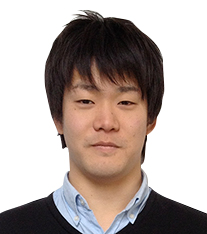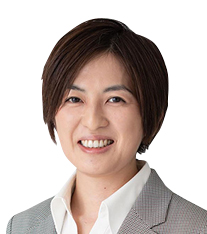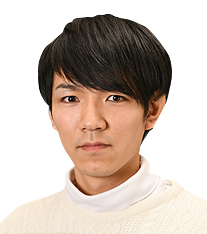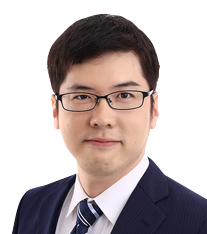- JST Home
- /
- Strategic Basic Research Programs
- /
 PRESTO
PRESTO- /
- project/
- Establishing the Solid Foundation for Innovative Measurement and Analysis Process/
- [Measurement and Anlysis Foundation] Year Started : 2024
[Measurement and Anlysis Foundation] Year Started : 2024
Ichiro Inoue
Damage-free X-ray measurment using attosecond X-ray laser pulses
Grant No.:JPMJPR24J1
Researcher
Ichiro Inoue

Project Associate Professor
Graduate School of Frontier Sciences
The University of Tokyo
Outline
In material characterization using X-ray beams, radiation damage has been a limiting factor in the accuracy of results and the range of applicable targets. This research aims to achieve damage-free X-ray measurements using attosecond X-ray pulses by completing the measurement before the onset of X-ray-induced structural and electronic damage. Through the development of unique focusing optics compatible with attosecond X-ray pulses and temporal diagnostic tools based on machine learning techniques, this study seeks to demonstrate protein nanocrystal structure analysis and X-ray nonlinear spectroscopy.
Emiko Kazuma
Development of an analytical platform for surface reactions from atomic to macroscale
Grant No.:JPMJPR24J2
Researcher
Emiko Kazuma

Associate Professor
School of Engineering
The University of Tokyo
Outline
In this project, an analytical platform for surface reactions will be developed by seamlessly combining surface analysis at the atomic/molecular scale with macroscale surface analysis. This enables the comprehensive data sets measured on the same sample to be obtained. Surface reactions will be investigated and analyzed based on various data including atomic-level structure of active sites, electronic structures, local reactivities of adsorbed molecules, and macroscopic reactivity. All obtained data using this analytical platform will be provided for parameters for the theoretical models, leading to the contribution to materials informatics in catalysis.
Tomoya Kawaguchi
Multidimensional information analyses using coherent diffraction imaging
Grant No.:JPMJPR24J3
Researcher
Tomoya Kawaguchi

Assistant professor
Institute for Materials Research
Tohoku University
Outline
We will advance the Bragg coherent diffraction imaging technique to obtain multidimensional information inside crystalline materials, including strain field, defects, crystal structure, electronic state distribution, and their time evolution, in addition to three-dimensional morphological information, with a spatial resolution of approximately single nm using next-generation synchrotron X-rays sources. Furthermore, by using informatics technology, we will establish the foundation of the analysis technology to clarify features and descriptors that govern the material’s properties while maintaining the multidimensionality of the obtained information.
Naoyuki Kawamoto
Development of in-situ nanoscale stereoscopic thermal transport meausurements
Grant No.:JPMJPR24J4
Researcher
Naoyuki Kawamoto

Principal Researcher
Center for Basic Research on Materials
National Institute for Materials Science
Outline
From the perspective of energy conservation and renewable energy, there is a growing need to understand three-dimensional, microscopic thermal transport phenomena in practical materials and devices. To address this, we are developing an in-situ nanoscale stereoscopic thermal transport method using dual-point temperature measurements for three-dimensional thermal transport evaluation within a transmission electron microscope (TEM). Additionally, I will focus on the development of a new method that investigates the relationship between local stress and heat at interfaces and particle junctions.
Kiyou Shibata
Statistical modeling of electronic spectroscopy measurements based on computational data
Grant No.:JPMJPR24J5
Researcher
Kiyou Shibata

Associate Professor
Institute of Materials and Systems for Sustainability
Nagoya University
Outline
Spectroscopic data related to electronic states contain rich information. However, due to the complexity of the principles underlying spectrum formation, a quantitative analysis method for practical measurements, which include multiple components and noise, has not been established. This project aims to develop a method for quantitatively identifying and separating spectral components and extracting physical and structural information by combining machine learning models trained on electronic spectroscopy measurement data obtained from first-principles calculations and statistical modeling.
Shion Takeno
Development of data-driven experimental design method with various information sources
Grant No.:JPMJPR24J6
Researcher
Shion Takeno

Assistant Professor
Graduate School of Engineering
Nagoya University
Outline
Bayesian optimization has attracted attention as an efficient data-driven experimental design method using machine learning models. However, existing Bayesian optimization methods can only be applied when obtaining real-valued experimental results from a single experiment or measurement. Therefore, this study aims to develop a more practical data-driven experimental design method that can take into account various information sources, such as simulations of different accuracies, multiple experimental processes, and prior knowledge of experts.
Satoko Toyama
Development and application of in-situ electromagnetic field observation
Grant No.:JPMJPR24J7
Researcher
Satoko Toyama

Assistant Professor
School of Engineering
The University of Tokyo
Outline
The dynamics of local electromagnetic fields at the sub-nanometer scale at crystal interfaces play a critical role in advanced materials, such as electronic devices, spintronic devices, batteries, catalyst, and more. This research aims to develop a novel method by advancing scanning transmission electron microscopy to directly observe the external field response of local electromagnetic fields with ultra-high spatial resolution. By applying this technique to various materials, we will correlate local electromagnetic fields with interfacial atomic structures, aiming to achieve a fundamental understanding of the mechanisms underlying material functionalities.
Kazuaki Toyoura
Development of innovative techniques for theoretically analyzing atomic and ionic dynamics
Grant No.:JPMJPR24J8
Researcher
Kazuaki Toyoura

Associate Professor
Graduate School of Engineering
Kyoto University
Outline
First-principles analysis of atomic and ionic dynamics in solids is a powerful tool to obtain the atomic-scale picture. However, conventional techniques have challenges in the compatibility between accuracy and efficiency, which requires technological innovation to realize theoretical calculation-driven materials exploration. In the present study, I aim to develop a theoretical approach for analyzing atomic and ionic dynamics with high accuracy, efficiency, and versatility, which enables efficient exploration of novel materials with high ionic conductivity.
Kosuke Nakano
Development and applications of methods to compute atomic forces based on diffusion Monte Carlo framework
Grant No.:JPMJPR24J9
Researcher
Kosuke Nakano

Independent Scientist
Center for Basic Research on Materiarls
National Institute for Materials Science
Outline
Ab initio quantum Monte Carlo (QMC) methods are attracting attention as the next generation of electronic structure calculation methods. A frontier of QMC from a methodological viewpoint is to go beyond the currently established total energy calculations, for example, to establish a method to compute atomic forces. In this project, I will develop a method to calculate atomic forces and pressures acting on atoms based on the diffusion quantum Monte Carlo framework and promote its application in materials science.
Asuka Nakamura
Data-driven modeling of nonequlibrium dynamics by femtosecond electron microscopy
Grant No.:JPMJPR24JA
Researcher
Asuka Nakamura

Researcher
Center for Emergent Matter Science
RIKEN
Outline
Photo-induced nonequilibrium states of solids host a wealth of novel properties and functionalities not found in equilibrium states. This study aims to develop a femtosecond electron microscope capable of measuring photoinduced dynamics in materials with fs × nm spatiotemporal resolution. This technique enables a quantitative analysis of the spatiotemporal evolution of nonequilibrium crystal structures. Additionally, by applying data-driven modeling techniques to the experimental results, the study uncovers the equations of motion governing atomic behavior and advances the fundamental understanding of nonequilibrium physics.













